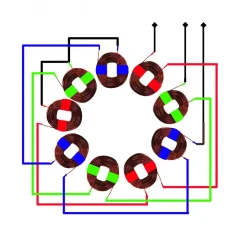- Joined
- Dec 22, 2006
- Messages
- 6
I have a 1970 Commando S with a Tri-spark charging system. I am rewiring the bike and will hide some of the wires. In doing so I thought to combine the 3 yellow wires from the alternator into one and run it through the frame. Once it exits the frame I would connect it to the 3 wires from the rectifier. I don't see an issue doing this. Am I wrong?
Combining the three wires into one will require a wire that can handle 14.5 amps or 14 gauge wire (carries 15 amps). I plan to use a 12 gauge wire (it can carry 20 amps so I have some safety margin).
Your thoughts are appreciated.
Combining the three wires into one will require a wire that can handle 14.5 amps or 14 gauge wire (carries 15 amps). I plan to use a 12 gauge wire (it can carry 20 amps so I have some safety margin).
Your thoughts are appreciated.

